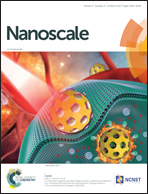Negative Poisson's ratio in graphene oxide
Abstract
We perform molecular dynamics simulations to investigate the Poisson's ratio of graphene oxide. We find that the Poisson's ratio can be effectively tuned by increasing the degree of oxidation of graphene oxide. More specifically, the Poisson's ratio decreases linearly from positive to negative with increasing oxidation, turning negative at room temperature for a degree of oxidation of 0.27, and reaching a value of −0.567 for fully oxidized graphene. The oxidation dependence of the Poisson's ratio is attributed to the tension-induced suppression of the ripples resulting from the oxidation, whose amplitude increases with increasing oxidation. Finally, we also demonstrate the temperature dependence of the Poisson's ratio in the graphene oxide.



 Please wait while we load your content...
Please wait while we load your content...